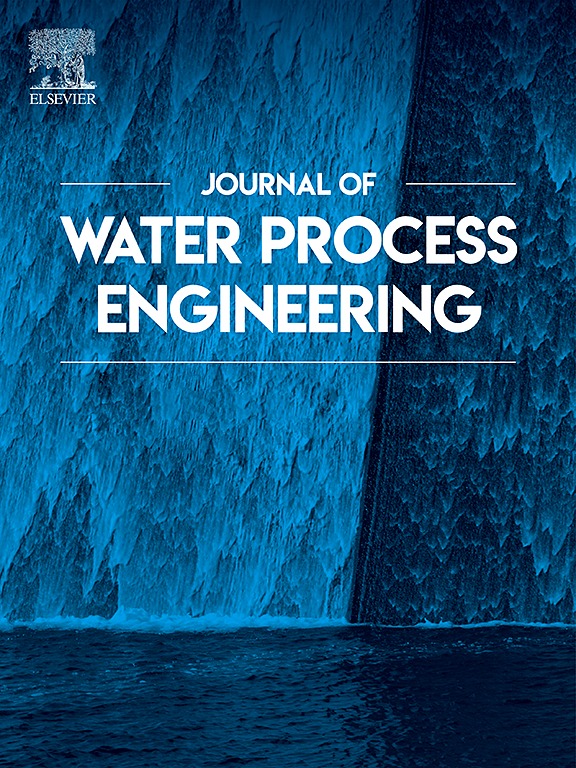Tracking virulence factor genes and their combination with resistance genes for microbial risk assessment in drinking water treatment plants
IF 6.3
2区 工程技术
Q1 ENGINEERING, CHEMICAL
引用次数: 0
Abstract
Virulence factor genes (VFGs) and their intragenomic combinations with antibiotic resistance genes (ARGs) have been recognized as important targets for microbiological health risk assessment. Yet, their dynamics during drinking water treatment plants (DWTPs) remain unknown. Herein, we conducted an advanced VFG-centric metagenomic strategy to track the fate of VFGs and the intragenomic combination of VFG and ARG during two full-scale DWTPs. We detected 197 VFGs belonging to 12 categories in the two DWTPs by metagenomic sequencing. Both DWTPs elevated the relative abundance of total VFGs, revealing the potential microbial health risks during drinking water treatment. The post-ozonation unit could promote the relative abundance of 8 dominant VFG categories (0.09–3.02-log10). We identified 59 intragenomic VFG-ARG combinations (including 17 combinations of VFG and multiple ARGs) via metagenomic assembly. The DWTP adopting ozone-biological activated carbon treatment processes was revealed to induce the integration of VFG and ARG (even multiple ARGs), which might promote the microbial health risk for effluent. Mycobacterium, Acidovorax, Pseudomonas, and Novosphingobium genera were identified as the primary hosts for VFGs and crucial factors affecting the VFG dynamics during two DWTPs. This research provides new insights into the assessment and control of microbial health risks in drinking water treatment.

求助全文
约1分钟内获得全文
求助全文
来源期刊

Journal of water process engineering
Biochemistry, Genetics and Molecular Biology-Biotechnology
CiteScore
10.70
自引率
8.60%
发文量
846
审稿时长
24 days
期刊介绍:
The Journal of Water Process Engineering aims to publish refereed, high-quality research papers with significant novelty and impact in all areas of the engineering of water and wastewater processing . Papers on advanced and novel treatment processes and technologies are particularly welcome. The Journal considers papers in areas such as nanotechnology and biotechnology applications in water, novel oxidation and separation processes, membrane processes (except those for desalination) , catalytic processes for the removal of water contaminants, sustainable processes, water reuse and recycling, water use and wastewater minimization, integrated/hybrid technology, process modeling of water treatment and novel treatment processes. Submissions on the subject of adsorbents, including standard measurements of adsorption kinetics and equilibrium will only be considered if there is a genuine case for novelty and contribution, for example highly novel, sustainable adsorbents and their use: papers on activated carbon-type materials derived from natural matter, or surfactant-modified clays and related minerals, would not fulfil this criterion. The Journal particularly welcomes contributions involving environmentally, economically and socially sustainable technology for water treatment, including those which are energy-efficient, with minimal or no chemical consumption, and capable of water recycling and reuse that minimizes the direct disposal of wastewater to the aquatic environment. Papers that describe novel ideas for solving issues related to water quality and availability are also welcome, as are those that show the transfer of techniques from other disciplines. The Journal will consider papers dealing with processes for various water matrices including drinking water (except desalination), domestic, urban and industrial wastewaters, in addition to their residues. It is expected that the journal will be of particular relevance to chemical and process engineers working in the field. The Journal welcomes Full Text papers, Short Communications, State-of-the-Art Reviews and Letters to Editors and Case Studies
 求助内容:
求助内容: 应助结果提醒方式:
应助结果提醒方式:


